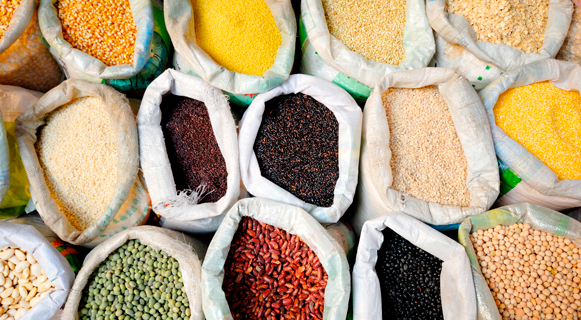
Image: Pixabay
In the 1st half of 2021, the capacity available for storage in Brazil was 180.6 million tons, 2.5% higher than the previous semester, according to IBGE data. The number of establishments also increased by 2.5% compared to the second half of 2020.
Rio Grande do Sul has the largest number of storage establishments (2,112) and Mato Grosso has the largest capacity: 44.4 million tons. The stock of agricultural products totaled 59.2 million tons, an increase of 12% compared to 52.9 million tons on June 30, 2020.
In this first half of 2021, the South, Northeast and North Regions saw increases in the number of establishments of 5.7%, 3.8% and 1.7%, respectively, while the Southeast and Central-West Regions showed drops of 1.1% and 0 ,6%. In relation to the stocks of the five main agricultural products existing in storage units, soybean stocks represented the largest volume (36.7 million tons), followed by corn stocks (11.4 million), rice (5.5 million) , wheat (2.4 million) and coffee (1.0 million). These products constitute 96.2% of the total stored among the products monitored by this research.
Silo capacity reaches 90.4 million tons, rising to 3.6%.
In terms of useful storable capacity, silos predominate in the country, having reached 90.4 million tons in the first half of 2021, which represents 50.0% of the total useful capacity. Compared to the second half of 2020, silo capacity grew by 3.6%.
{module Form RD}
Next, we highlight the bulk and bulk warehouses, which reached 67.7 million tons of usable storable capacity, 2.4% higher than in the previous period. This type of storage is responsible for 37.5% of national storage.
In relation to conventional, structural and inflatable warehouses, they totaled 22.5 million tons, which represented a drop of 1.6% compared to the second half of 2020. These warehouses contribute 12.5% of the total storage capacity.
By region, silos predominate in the South Region, being responsible for 62.7% of the region's storage capacity and 50.3% of the country's total silo capacity. The bulk and bulk carriers appear with greater intensity in the Central-West, with 54.0% of the Region's capacity and 55.9% of total capacity. Conventional, structural and inflatable warehouses predominate in the South Region (34.9%), followed closely by the Southeast Region (31.5%). These two regions together correspond to 66.4% of the country's total conventional, structural and inflatable warehouse capacity.
The South, Northeast and North regions saw increases in the number of establishments.
With 8,098 active establishments in the first half of 2021, the survey showed an increase of 2.5% in the number of active establishments when compared to the second half of 2020. The South, Northeast and North Regions had an increase in the number of establishments of 5.7% , 3.8% and 1.7%, respectively, while the Southeast and Central-West Regions showed drops of 1.1% and 0.6%.
Rio Grande do Sul has the largest number of storage establishments (2,112), followed by Mato Grosso (1,363) and Paraná (1,334). Mato Grosso has the largest storage capacity in the country, with 44.4 million tons. Of this total, 59.8% are bulk carriers and 33.3% are silos. Rio Grande do Sul and Paraná have 34.3 and 32.6 million tons of capacity, respectively, and the silo is predominant in these states.
Corn stock drops 14%, but soybeans, rice, wheat and coffee are up.
The stock of agricultural products totaled 59.2 million tons, an increase of 12% compared to 52.9 million tons on June 30, 2020.
In the first half of 2021, there were increases in stocks of soybeans (19.3%), rice (33.8%), wheat (29.3%) and coffee (14.0%), compared to the first half of 2020, while the stock of corn fell (-14.2%). These products constitute 96.2% of the total stored among the products monitored by the research. The remaining 3.8% is made up of cotton, black beans, colored beans and other grains and seeds.
Source: DATA














